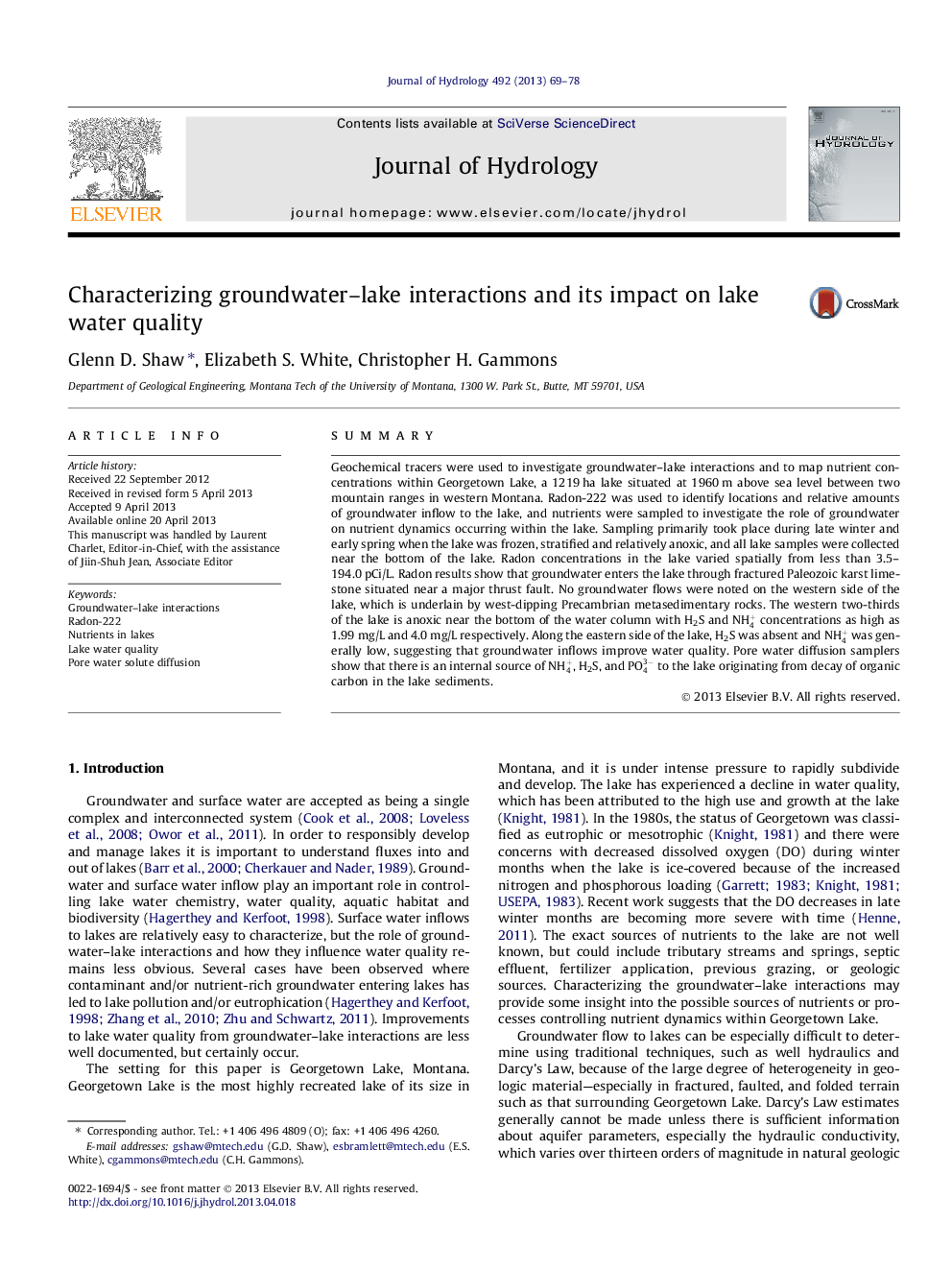| Article ID | Journal | Published Year | Pages | File Type |
|---|---|---|---|---|
| 6413778 | Journal of Hydrology | 2013 | 10 Pages |
â¢A conceptual model for groundwater-lake interactions determined using tracers.â¢Groundwater inflows controlled by a thrust fault through the lake.â¢Inflowing groundwater improves water quality during late winter ice-on season.â¢Pore water diffusion samplers show internal source of nutrients NH4+ and H2S.
SummaryGeochemical tracers were used to investigate groundwater-lake interactions and to map nutrient concentrations within Georgetown Lake, a 1219Â ha lake situated at 1960Â m above sea level between two mountain ranges in western Montana. Radon-222 was used to identify locations and relative amounts of groundwater inflow to the lake, and nutrients were sampled to investigate the role of groundwater on nutrient dynamics occurring within the lake. Sampling primarily took place during late winter and early spring when the lake was frozen, stratified and relatively anoxic, and all lake samples were collected near the bottom of the lake. Radon concentrations in the lake varied spatially from less than 3.5-194.0Â pCi/L. Radon results show that groundwater enters the lake through fractured Paleozoic karst limestone situated near a major thrust fault. No groundwater flows were noted on the western side of the lake, which is underlain by west-dipping Precambrian metasedimentary rocks. The western two-thirds of the lake is anoxic near the bottom of the water column with H2S and NH4+ concentrations as high as 1.99Â mg/L and 4.0Â mg/L respectively. Along the eastern side of the lake, H2S was absent and NH4+ was generally low, suggesting that groundwater inflows improve water quality. Pore water diffusion samplers show that there is an internal source of NH4+, H2S, and PO43- to the lake originating from decay of organic carbon in the lake sediments.
